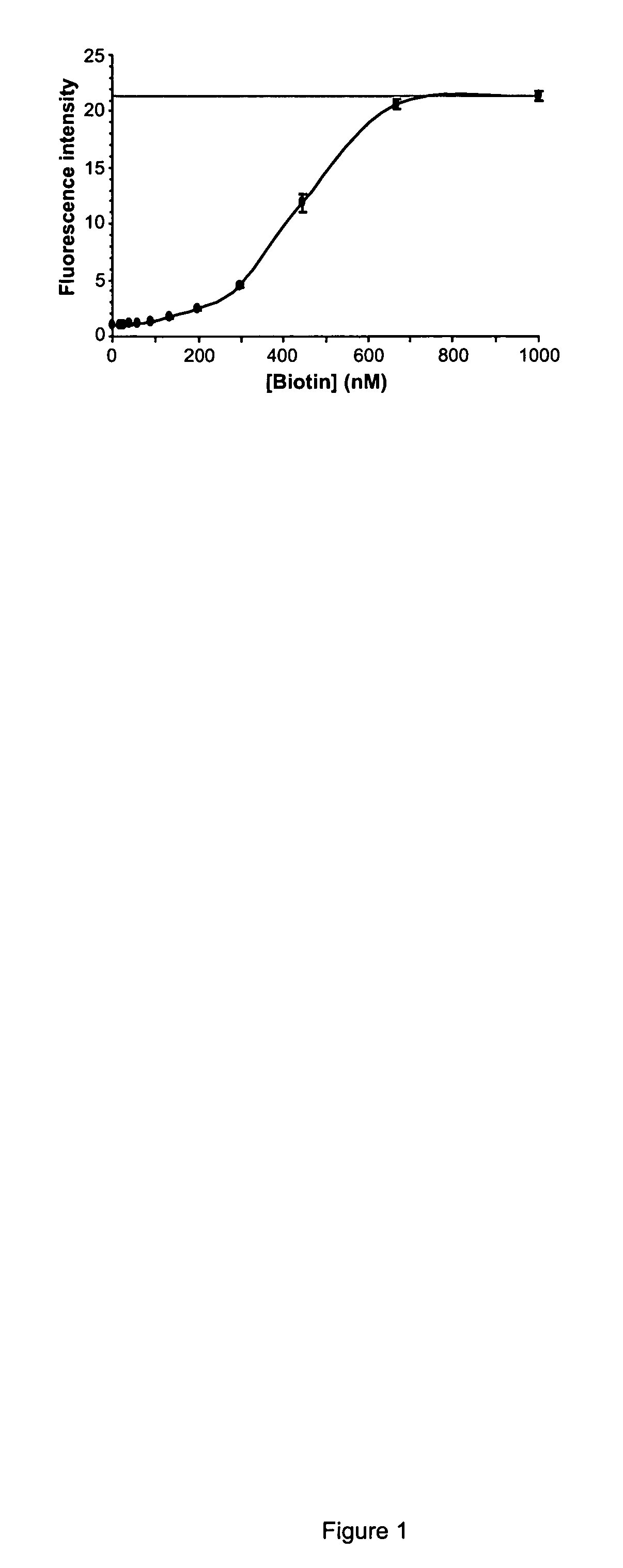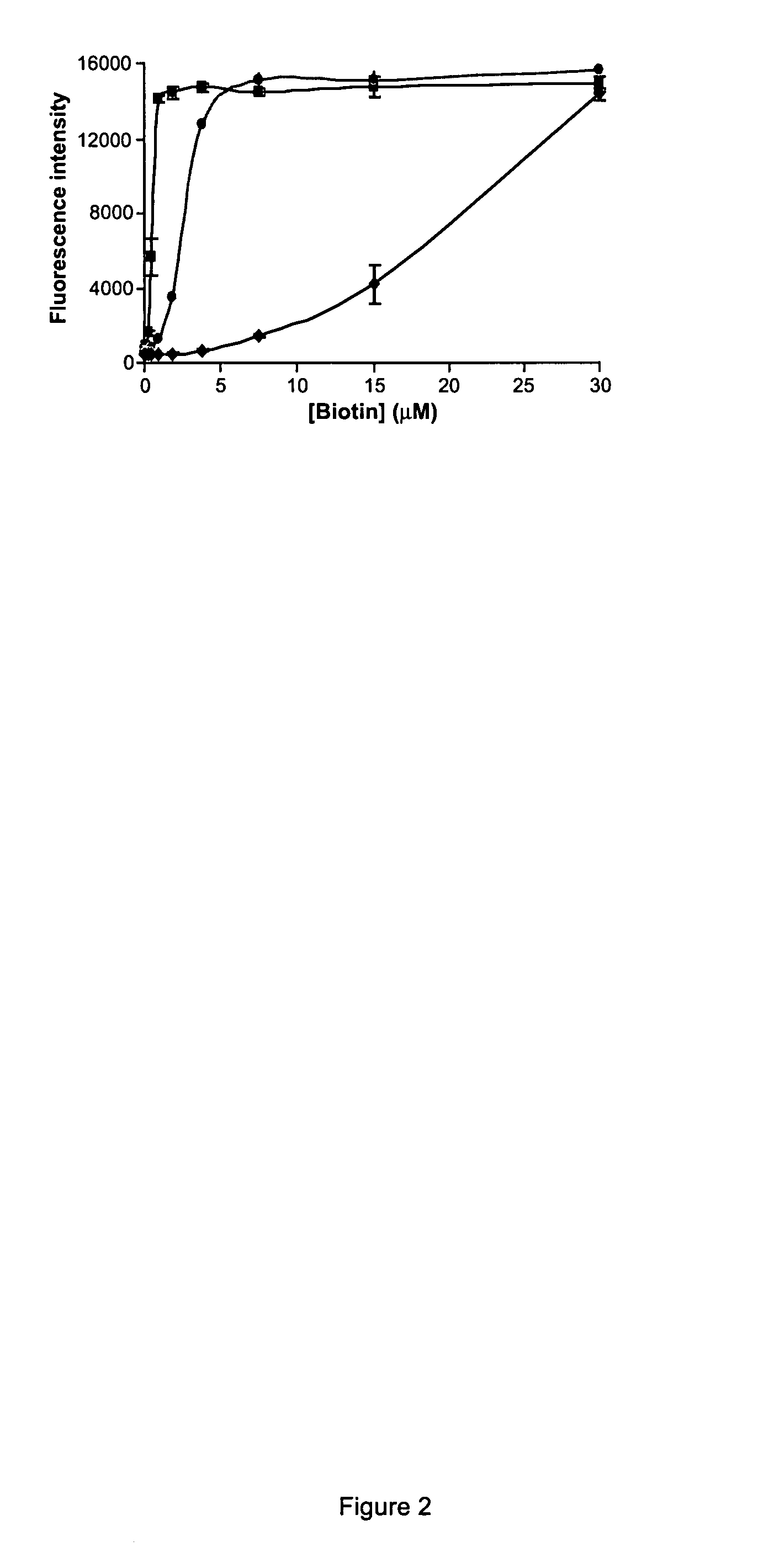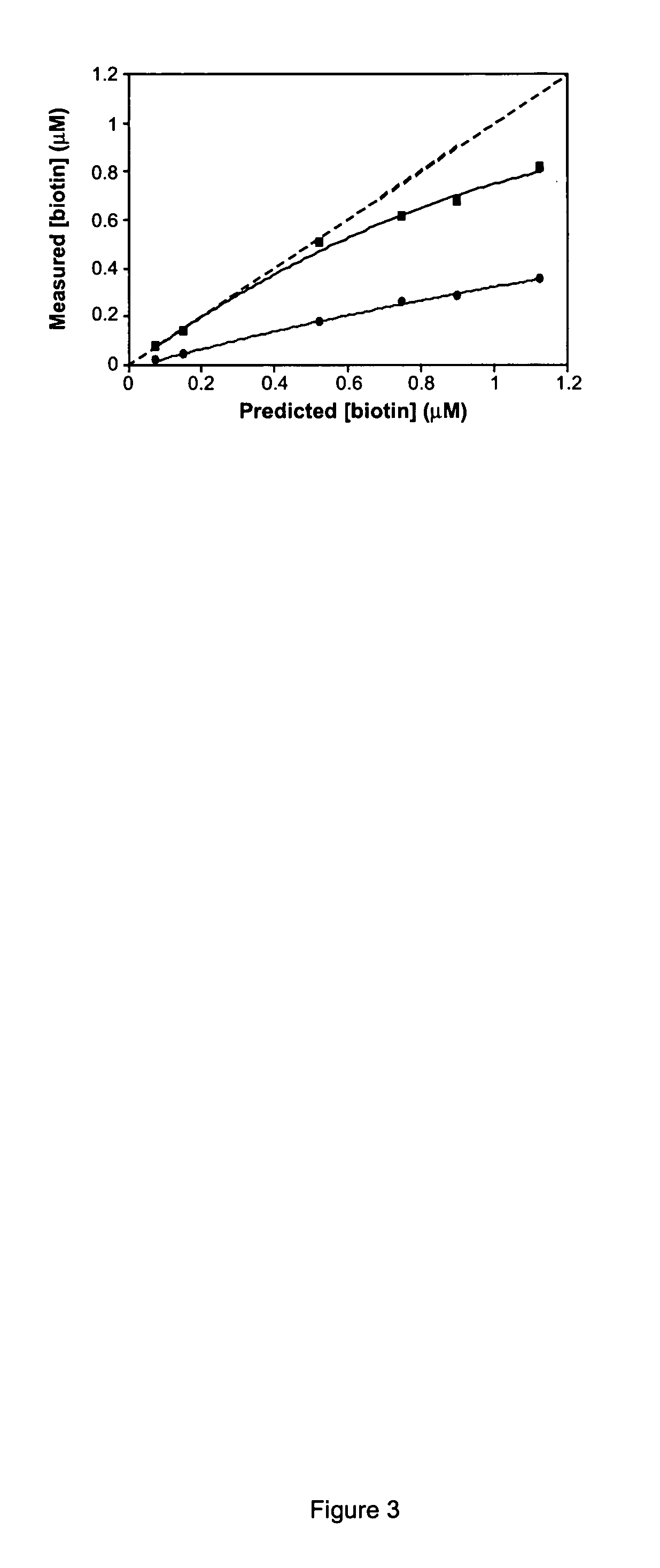Biotin recognition sensors and high-throughput assays
a biotin recognition and high-throughput assay technology, applied in the field of methods and biotin recognition sensors, can solve the problems of low sensitivity of haba titration, sparse description of how to ascertain the extent of carrier molecule biotinylation,
- Summary
- Abstract
- Description
- Claims
- Application Information
AI Technical Summary
Benefits of technology
Problems solved by technology
Method used
Image
Examples
example 1
Constructing Biotin Standard Curves
[0150] Biotin standard curves were obtained by titrating a solution containing 200 nM Alexa Fluor 488-labeled avidin and 250 μM HABA in PBS (50 mM phosphate, 150 mM NaCl, pH 7.4). Biotin was added from an aqueous stock solution to give final concentrations of 0-1000 nM in 100 μL samples. Fluorescence of samples was measured in a microplate reader (CytoFluor 4000, PerSeptive Biosystems, excitation / emission=485 / 530 nm). The results are presented in FIG. 1.
[0151] The data illustrates the ˜21-fold increase in fluorescence signal upon complete displacement of HABA. This is a larger optical signal than can be obtained using donor quenching by the protein matrix as the signal-generating mechanism (see Nargassi et al., Meth. Enzymol. 122:67-72 (1986)). The fluorescence signal increase upon biotin binding for most donor-labeled avidin conjugates is typically about 2-fold and rarely greater than 10-fold. The limit of detection is about 20 nM biotin, about ...
example 2
Biotin Standard Curves with Concentration Range Adjustments
[0152] The analytical range of the assay was shifted to match the concentration range of input samples by adding unlabeled avidin to the sample. Several titrations were conducted according to the general conditions described in Example 1. The results are presented in FIG. 2. Three standard curves were recorded. The first curve (square) contained no added unlabeled avidin. The second curve (circle) had 0.8 μM unlabeled avidin. The third curve (diamond) had 7.0 μM unlabeled avidin.
example 3
Measuring the Extent of Biotinylation on a Protein with and without Enzymatic Digestion
[0153] Assays that use avidin (or streptavidin, as well as some of their derivatives) as the BRC share a common limitation when used for analysis of multiple-biotinylated proteins and nucleic acids. Conformational restraints imposed by the macromolecular framework restricts the access of the biotin labels to the BRC binding sites, resulting in underestimation of the biotin concentration. The conventional solution to this problem for proteins, adopted here, is to pre-treat samples with protease prior to analysis.
[0154] Samples containing 0.01-0.15 μM BRC (biotin-XX goat anti-mouse IgG, (Molecular Probes, Inc., B2763)) were subjected to enzymatic digestion via proteinase K (1 U / mL) digestion. Proteins were subject to digestion overnight. Fluorescence of samples was measured in a microplate reader (CytoFluor 4000, PerSeptive Biosystems, excitation / emission=485 / 530 nm). The fluorescence intensity da...
PUM
| Property | Measurement | Unit |
|---|---|---|
| dissociation constant | aaaaa | aaaaa |
| dissociation constant | aaaaa | aaaaa |
| molecular weight | aaaaa | aaaaa |
Abstract
Description
Claims
Application Information
 Login to View More
Login to View More - R&D
- Intellectual Property
- Life Sciences
- Materials
- Tech Scout
- Unparalleled Data Quality
- Higher Quality Content
- 60% Fewer Hallucinations
Browse by: Latest US Patents, China's latest patents, Technical Efficacy Thesaurus, Application Domain, Technology Topic, Popular Technical Reports.
© 2025 PatSnap. All rights reserved.Legal|Privacy policy|Modern Slavery Act Transparency Statement|Sitemap|About US| Contact US: help@patsnap.com



